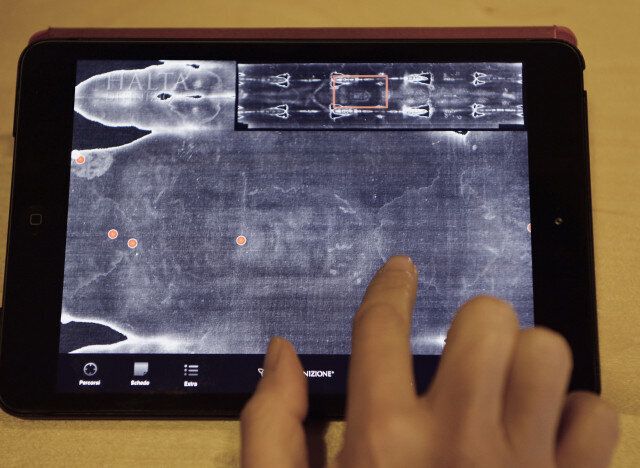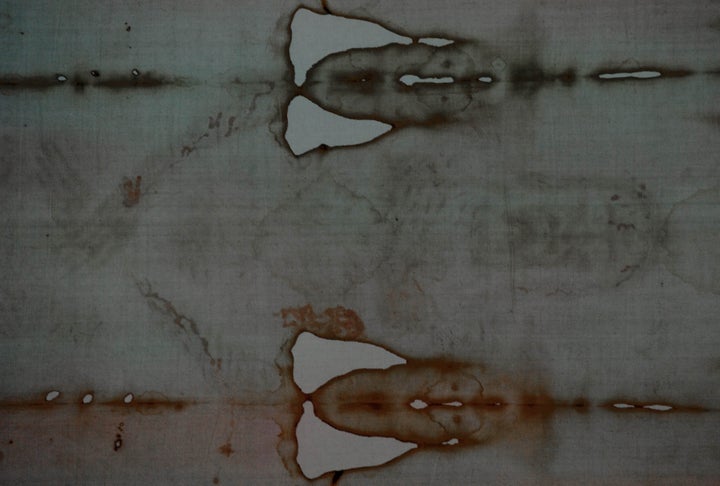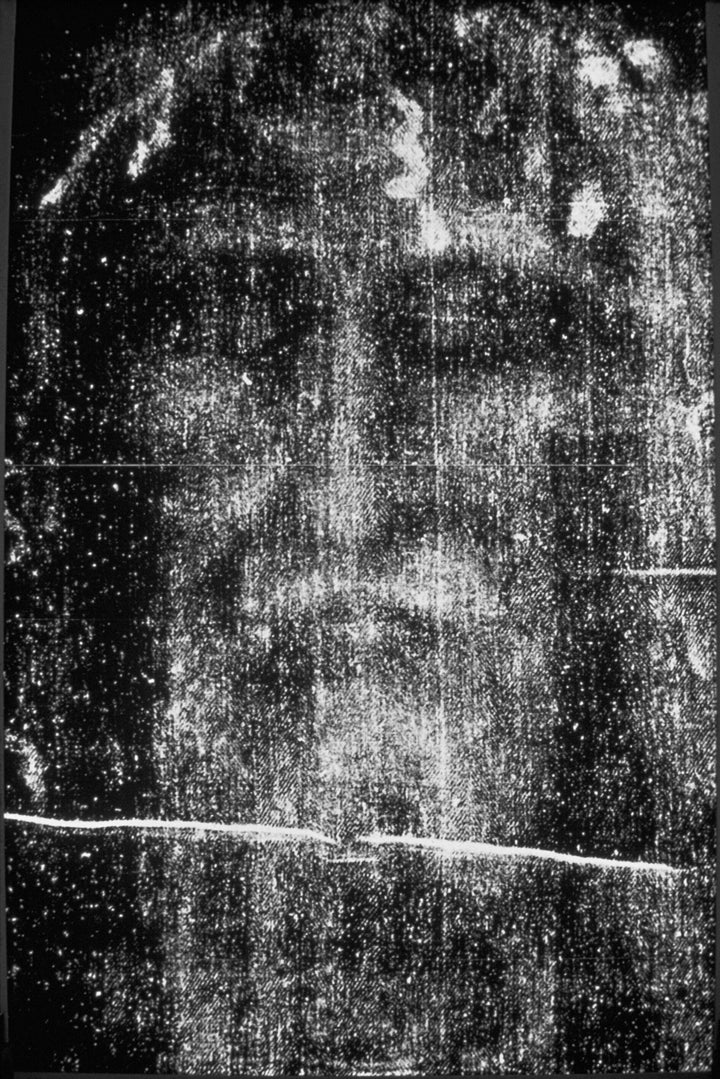The Turin Shroud, believed by many to be the burial cloth of Jesus Christ, has made a rare appearance live on TV with pictures of the sacred cloth making their debut on a new app.
Amid new claims about the Shroud's authenticity, Pope Francis referred to the cloth, which bears the imprint of a body with wounds matching those suffered by Jesus, as an "icon," rather than a relic.
While an icon acts a focal point for worship, a relic implies genuine remains. The church has always remained vague on whether it believes the Turin Shroud is really the burial cloth of Jesus or not but continued to stress its importance for worshippers.

The Archbishop of Turin Cesare Nosiglia kneels in front of the Shroud of Turin that went on display for a special TV appearance
Speaking in front of the shroud Pope Francis said: "This image speaks to our heart and moves us to climb the hill of Calvary, to look upon the wood of the Cross, and to immerse ourselves in the eloquent silence of love.
He added: "This disfigured face resembles all those faces of men and women marred by a life which does not respect their dignity, by war and violence which afflict the weakest. And yet, at the same time, the face in the Shroud conveys a great peace; this tortured body expresses a sovereign majesty."

The new Shroud app
The shroud has only appeared once on television before, in 1973. It is usually kept in bulletproof, climate-controlled case in Turin cathedral, away from the public eye.
To coincide with its appearance on TV, the church released a new Shroud 2.0 app which allows users to scroll over a high-definition image of the 1.21x4.42m cloth and read facts about its history.
The move is said to have been authorised by the former Pope Emeritus Benedict as a parting gift to his congregation.
Though radiocarbon dating done in the 1980s indicated the cloth is of medieval origin, many still believe the relic to be the actual burial robe of Jesus Christ.
Research published in December suggests that the image on the shroud, thought to be an imprint of Christ's face, could only have been made by ultraviolet lasers.
As lasers did not exist in either biblical or medieval times, researchers from the National Agency for New Technologies, Energy and Sustainable Economic Development, are pointing towards some form of supernatural involvement.
By looking to identify "the physical and chemical processes capable of generating a colour similar to that of the image on the shroud," the study found that only ultraviolet lasers could create similar markings, concluding that some form of "electromagnetic energy (such as a flash of light at short wavelength)," was responsible.

For many the Shroud is the burial cloth of Jesus
The latest battery of experiments led experts to conclude the cloth may have come from the first century AD making it old enough to have been used to bury Jesus Christ.
Giulio Fanti, a professor of mechanical and thermal measurement at the University of Padua, also found trace elements of soil "compatible with the soil of Jerusalem."

The imprint of a man's face can be seen in the Shroud
Fanti has written several papers about the shroud, including one in 2011 that hypothesized how radiation could have caused the image of a man's bloody face and body to appear on the cloth.
In an email with The Huffington Post, Fanti said:
"For me the [Shroud] comes from God because there are hundreds of clues in favor to the authenticity," he wrote, adding that there also "no sure proofs."
Researchers have suggested tests that showed the cloth was only from the Middle Ages tested fibres that had been used to repair the shroud about that time.